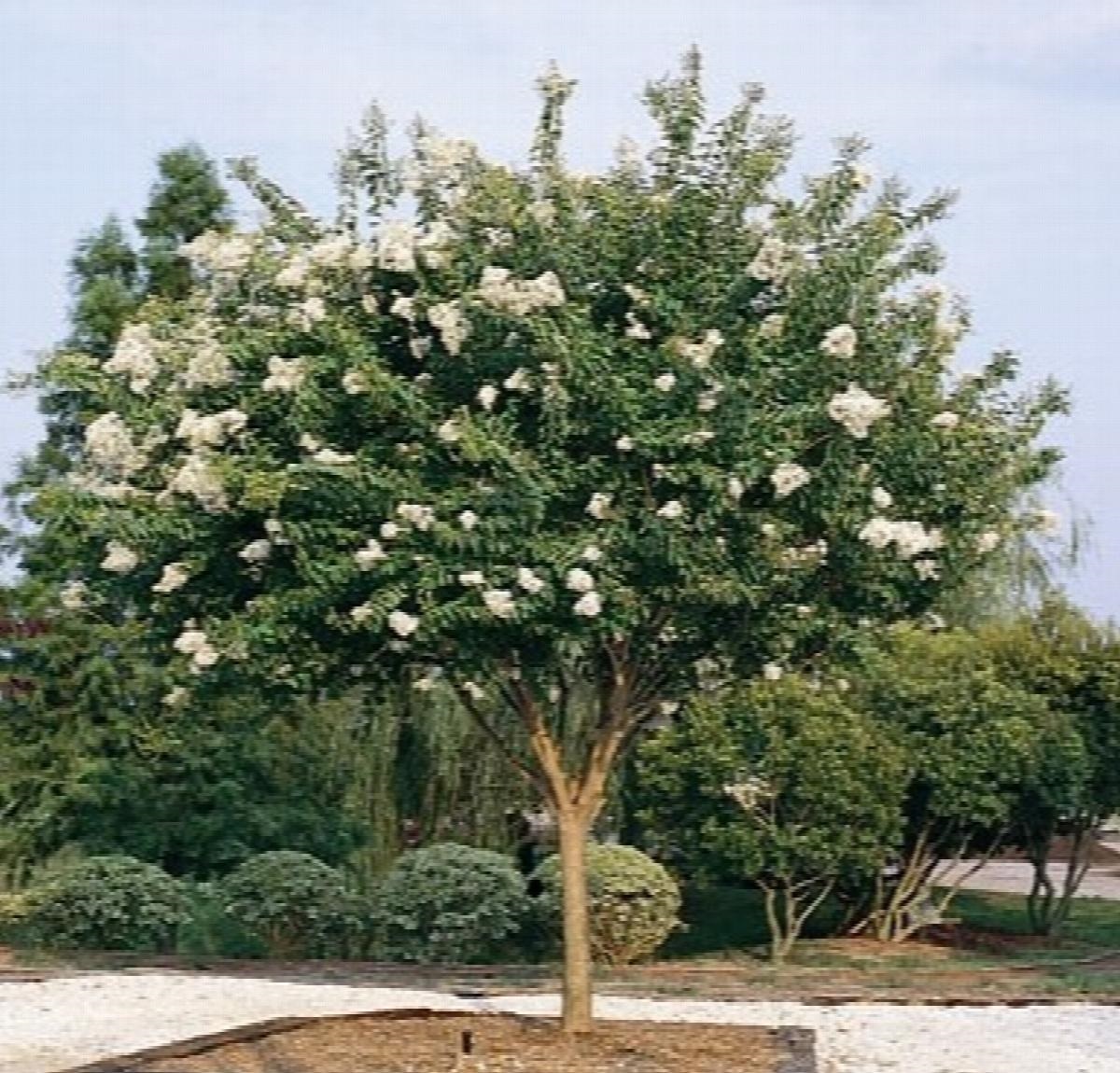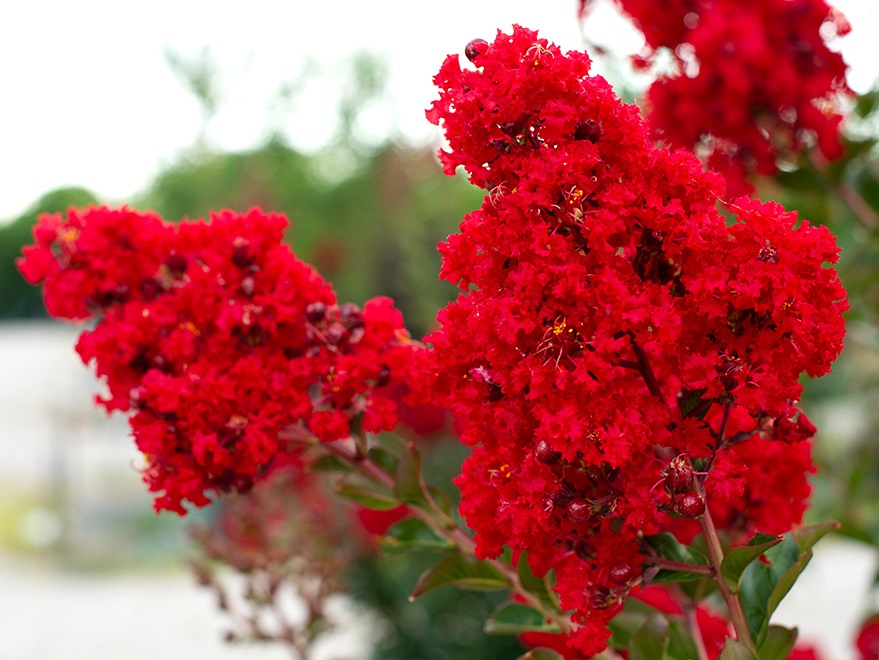919-552-8286
sales@adcocksnursery.com

Dark pink/ grows 15' ht & sp
*** LIMITED *** The 'Tuscarora' Crapemyrtle is a medium-growing, rounded, broadleaf, deciduous shrub or small tree. It produces arching branches tipped with dark coral-pink flowers from mid-summer to early fall. Its dark green foliage turns a brilliant orange-red in the fall. This crape myrtle is great as a specimen, along walkways, or used in masses for a bold effect. It is often planted as a street tree or in public parks. Thrives in average, medium moisture, well-drained soil in full sun.
Photo Credit: Wiki Commons; The JC Raulston Arboretum

White flowers/ grows 20' + ht & sp
*** SOLD OUT *** Natchez is a medium-growing, upright, broadleaf, deciduous tree. It produces tall arching branches with clusters of white blooms. Leaves turn bronze-orange in the fall. The Natchez Crape myrtle has cinnamon-brown exfoliating bark. This crape myrtle is great as a specimen, along walkways, or used in masses for a bold effect. It Is often planted as a street tree or in public parks. Thrives in average, medium moisture, well-drained soil in full sun.
Photo Credit: The JC Raulston Arboretum

Violet-purple/ grows 10-15' ht x 20' sp
Autauga has arching branches which produce dark purple flowers. The flowers are tight and compact and bloom from July to September. The foliage has a bronze tent in spring which turns bright green in summer and orange-red in autumn. This crape myrtle is great as a specimen, along walkways, or used in masses for a bold effect. It Is often planted as a street tree or in public parks. Thrives in average, medium moisture, well-drained soil in full sun.
Photo Credit: Charleston Tree Experts

Red Blooms, grows 12-15' ht x 8-10' sp
*** LIMITED *** This is a crape myrtle with upright branches that produce red flowers in mid-summer. Its dark green foliage turns red to reddish-purple in fall. Another feature of this tree is its bark which exfoliates with age. This crape myrtle is great as a specimen, along walkways, or used in masses for a bold effect. It is often planted as a street tree or in public parks. Thrives in average, medium moisture, well-drained soil in full sun.
Photo Credit: Treeland Nursery and Hands Garden Center